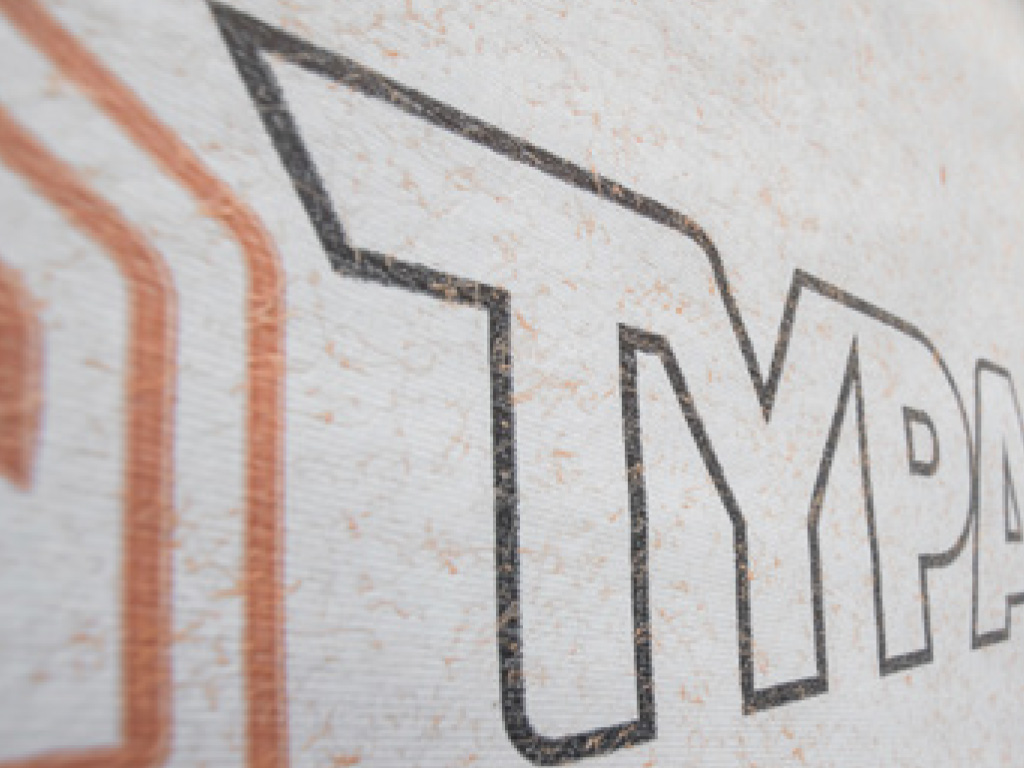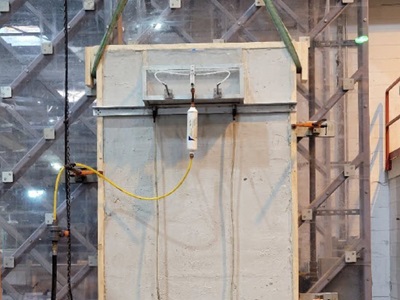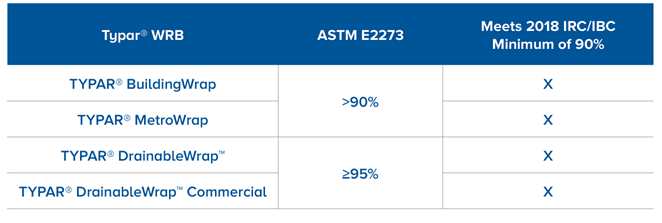Introduction to Drainable WRB's the Next Generation of Moisture Management in Walls
Drainage is widely accepted as one of the most effective measures for reducing the risk of building wrap damage caused by rain penetration. Historically, drainage has been achieved through the use of furring strips that separate the wrap from the structural sheathing and framing, but new and emerging technologies offer more efficient drainage solutions. Today’s most advanced building wrap products feature integrated drainage gaps through creping, embossing, weaving, or filament spacers. These new products eliminate the need for furring strips, helping to reduce material costs and streamline installation.

Thanks to an integrated layer of randomly oriented orange polypropylene fibers (Figure 1), TYPAR® DrainableWrap™ and TYPAR® DrainableWrap Commercial have been shown to achieve a 94.8% and 96.7%, respectively, drainage efficiency per ASTM E2273. This added layer of protection is particularly important in coastal climates and in areas subject to heavy wind-driven rainfall.
Figure 1: Randomly Oriented Orange Polypropylene Fibers on TYPAR® DrainableWrap and TYPAR® DrainableWrap Commercial
Introduction to ASTM E2273s

Figure 2 shows actual setup of the ASTM E 2273 drainage test on TYPAR® BuildingWrap and TYPAR® MetroWrap. Two 4 ft. by 8 ft. walls, one with TYPAR® BuildingWrap and another with TYPAR® MetroWrap, were assembled and tested for drainage efficiency by an independent accredited third-party lab facility.
During the ASTM E2273 test, a spray box with two small openings allowing for water application is sealed to the wall.Next, water is sprayed onto the wall for 75 minutes using a constant flow and dispersion, and the amount of water collected is measured every 15-minutes. Once the 75 minutes is complete, the wall sits idle for an additional 60 minutes before the collected water that has drained from the wall assembly is calculated. If greater than 90% of the total applied water has drained and been collected, the wall assembly is said to be in accordance with ASTM E2273. Section R703.9.2 of the 2018 International Residential Code (IRC) and Section 1407.4.1 of the 2018 International Building Code (IBC) both require the wall to have an average minimum drainage efficiency of 90% when tested in accordance with ASTM E2273.
Figure 2: ASTM E2273 Test Setup at Independent, Third-Party Lab for TYPAR® BuildingWrap and TYPAR® MetroWrap
Comparison of ASTM E2273 Results Across TYPAR® WRB’s
When tested at an independent third-party lab, both TYPAR® BuildingWrap and TYPAR® MetroWrap achieved a drainage efficiency of greater than 90%.
Conclusion / Recommendations
To learn more about the efficiency of TYPAR's WRB's, please visit TYPAR's brand page.
